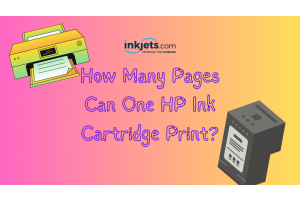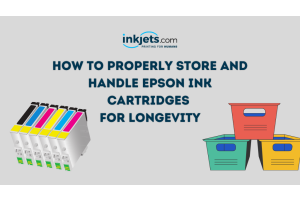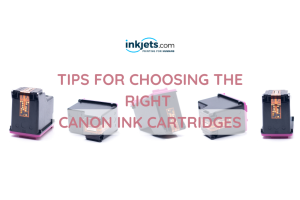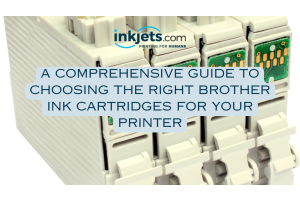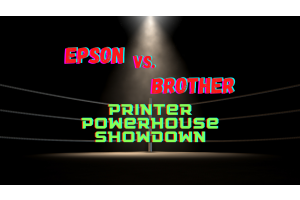
Article last updated March 7, 2023
What is Ink made out of? It's a simple question but has often been asked because there is no easy solution. The reason is simple - there are several kinds of ink, and each one has a unique set of properties.
By definition, ink is a fluid or a type of viscous material that is used for drafting, writing, or printing in order to record information and transmit thoughts in a semi-permanent form.
The history of ink
As early as 2500 BC, the Egyptians had discovered a suitable material to write on paper. This ink was made of water-soluble plant gums, glue, water, or possibly an oily substance, with powdered animal or plant charcoal as the colorant.
Today, modern inks have little in common with crude materials of ancient times except for one remarkable resemblance. All inks are mixtures of a vehicle (a liquid) and a coloring matter (pigment). A vehicle can be either a solvent alone, or a solvent plus a resinous binder, or a solvent plus both a resinous binder and a pigment. The coloring matter consists of a mixture of pigments, dyes, or dyestuffs.
Ink for writing

Writing ink is an important part of any printing process. In order to work properly, it needs to meet certain requirements. They include being clear, having good flow, staying stable in glass, not emitting odors, having intense colors, and adhering to the paper surface after application. Solvent is used to make the ink flow smoothly and evenly across the paper. Dyes are added to give the ink its color.
Dyes are available in a wide variety of colors and shades. These dyes are not permanent and can fade within a relatively short period of time. Ink that is to be used for permanent record, such as bank and governmental records and documents, must contain an iron content so that the ink does not degrade over time.
In order to make the record inks last longer, they contain an organic compound called binder. This substance keeps the pigment particles together so that they do not fall out of suspension. When the ink dries, the binder hardens into a solid film around each particle. A mixture of two kinds of binders is used to give the ink greater permanence. One type contains polyvinyl alcohol (PVA), which dissolves easily in water. Another kind is made of gelatin, which is insoluble in water. Both types can be mixed together in any proportion.
Ink for printers
Mixtures of vehicles (oil) and coloring matter (pigment), transferred by a mechanical printing process from a bulk state to a surface, are called inks. Their basic compositions vary depending on the type of transfer or printing process used; they may contain solvents, resins, dyes, pigments, waxes, oils, fats, soaps, surfactants, dispersing agents, thickeners, preservatives, antifoams, stabilizers, biocides, fungicides, corrosion inhibitors, pH adjusters, viscosity modifiers, emulsifiers, defoamers, and/or humectants. Inks can also include additional components such as UV absorbers, antioxidants, flame retardants, colorants, fillers, extenders, and/or adhesion promoters.
In today’s digital age, virtually all print media fall into one of two categories: digital or analog. Digital printing, such as laser printing, inkjet printing, and others, produces high quality output at an affordable price. Analog printing, such as offset printing, continues to produce high quality output at a lower cost per unit.
In typography, printing, or graphic design, an image is composed of individual dots called pixels. These can be arranged into various patterns, such as lines, squares, circles, triangles, and so forth. Each pixel may consist of one color (e.g., black) or multiple colors (e.g., red, green, blue). A printer produces images by laying down these colored dots in specific arrangements.
Printing presses apply ink to paper, which is then transferred to a final substrate such as cloth, metal, or plastic. In modern times, digital printers can also produce high quality images directly onto paper without intermediate steps.
Gravures are used to print images onto paper. They can also be used to create printed circuit boards (PCBs) and electronic components such as capacitors and resistors. In order to make these parts, a copper-clad board is prepared. A negative image is then drawn into the copper-clad board using a photographic technique called photolithography. After etching the copper off the board, the remaining patterned areas are plated with nickel and palladium. These metals act as electrodes during electroplating. Electrodes are attached to the PCB so that they can receive current. Finally, the metalized board is coated with solder paste and soldered to a printed circuit board.
The main consideration of the formulation of printing inks is how they're printed. Fast-moving rotary press printers utilize a very thin liquid of low viscosity that can be quickly applied to tiny, etched cells beneath the printing plate cylinder's surface. When the ink is removed from the unprinted area, it is immediately transferred to the paper.
Since gravure ink is applied directly onto the paper, it does not dry out as quickly as watercolor paint. Therefore, it requires a much longer drying period before being ready for printing. To speed up the process, artists often add resins to the vehicle. These binders dissolve completely into the solvent and leave no trace once they've dried.
A gravure ink (also called a "gravure" or "offset") is another type, one used for printing on metal plates. Gravures employ a completely different vehicle of a short and somewhat flexible consistency. They are greasy because they are not printed directly onto paper, but instead are applied to a sheet of aluminum foil, then transferred to the paper.
Since hard papers are often used for printing, they absorb the ink very quickly. Therefore, slower drying solvents must be used so that the ink doesn’t dry out before being printed. But because these solvents are volatile enough and binders strong enough, the ink dries completely without sticking to the paper.
Except for flexographic printing inks (which use a rubber-based ink), dry-ink printers generally do not evaporate much liquid ink during printing. In general, dry-ink printers have low viscosities and short bodies, with little tack or stickiness when they're on the press.
In order to make the ink stick better to paper, the vehicle must be made thicker. To do this, the vehicle may include an emulsion of water and oil. A common example is India Ink, which contains so much water that it can be applied directly onto paper without drying. Other examples include gouache, tempera paint, and acrylic paint.
Flexography is an old printing process that produces high quality prints from plates made from rubber or photopolymer resin. These materials can be cured by heat, UV light, or chemical reaction. In addition to being durable, flexible, and resistant to water, flexo plates can be produced inexpensively and quickly. They are typically used for packaging, labels, and short runs of advertising material.
A magazine ink, such as an indelible marker, would not be suitable to print cellophane candy wrappers because the ink would not stick properly and could possibly melt the wrapper itself. In addition, the ink may cause the wrapper to soften due to the ingredients of the candy, thus rendering the product unusable. These characteristics include gloss, flexibility, odorlessness, clarity, resistance to scratching, rubbing, abrasion, chemicals, and water.
In order to make an ink, one must grind the pigment finely so that it can be evenly distributed throughout the vehicle. Once the pigment is ground, it needs to be washed and cleaned. Pigment is the coloring matter of an ink. Ink is the liquid medium in which the pigment is suspended. When the ink dries, it becomes insoluble.
Important manufactured inorganic pigment colors are chrome yellow, iron blue, molybdate Orange, cadmium Red, and Titanium Dioxide. Organic pigments are soluble dyes made from natural or synthetic dyewoods. Hansa Yellow, Methyl Violet, Peacock Blue, Eosin, Phloxine, and Lithol Red are common organic pigment colors.
The blacks used in print inks are carbonaceous (carbon), carbon black, furnace black and lampblack. A bronze powder of aluminum, copper or an alloy bronze is used to give a metallic effect. A colorant’s presence affects ink’s properties such as gloss, opaqueness, consistency, resistance to fade, durability and the impact of grease and soap. The use of paper limits the choice of colors.
How is ink manufactured today?

The primary process in printmaking is the application of paint onto paper. In most cases, this is done through the use of an artist's brush. However, in some instances, such as etching, lithography, and screen printing, the process involves the direct application of paint onto a surface.
Ball or pebbles mills are employed when volatile materials are mixed, as in printing ink. These mills are cylindrical, tumble, or rotate about. Other chemical manufacturing equipment are utilized to make cars and for blending, mixing and handling the main and final materials.
In order to make the printed material last longer, newspapers often use paper that contains chemicals called "dyes" that can change color when exposed to light. These dyes are used to give the newsprint its distinctive colors. Newspapers also use special coatings to protect the paper from fading.
If black, it contains mostly ink (about 90%), along with a small amount of paper fiber and resin. Inks used include those based on solvent dyes, such as aniline red, blue, green, yellow, magenta, cyan, and others, and also those based on water-soluble direct dyes, such as alizarin crimson, indigo, cobalt violet, light fastness, and so forth.
Drying occurs by evaporation of the solvents into the air. Inks containing water soluble dyes can be printed directly onto the substrate without any pre-treatment. Water based inks dry faster than oil based inks. Oil based inks must be dried before printing.
Printing and decorating items such as glass bottles, wallpaper and plastic film wraps calls for special inks, because these materials can scratch or stain paper.
They also consist of a vehicle film former and coloring matter, with an additional substance to impart the special characteristics of the ink. The ink chemist varies his compounding to suit the needs of the surface.
Where do printer inks come from?
The majority of printer inks consist of vegetable oils such as soybean oil or linoleum, or a heavy petroleum product as a solvent. They are then mixed with pigmented resins to create ink which dries through evaporative loss. The base is called varnish.
Black ink is manufactured by combining various chemicals such as Carbon Black, Varnish, Pigment and Water. Color pigments are composed of salts and dyes. Nitrogen containing compounds include: Yellow Lake, PeaCock Blue, Phthalocyanine Green, and Diarylide Orange. White pigments include Titanium Dioxide. These ingredients are mixed together to create color printing ink.
What about printer ink cartridges?
An ink cartridge is an integral part of any inkjet printer. Ink cartridges contain the ink used to print documents. They also include the chip and electronic contacts needed to communicate with the printer. Some printers come with preinstalled ink cartridges, while others require users to purchase them separately.
Thermal ink
The majority of ink jet printers like HP, Canon and Lexmark utilize thermal ink jets. Within each ink reservoir portion is a heating element that includes a resistor or metal plate that responds to a printer’ s signal. A small amount of current flows through the resistor or metal plate to heat it up, causing the ink to evaporate and create tiny steam bubbles. These bubbles then force themselves out of the nozzles and onto the paper. Such an action takes place in only a fraction of a second.
Piezoelectric
Epson printers utilize piezoelectric elements in every nozzle in place off a heating element. The piezoelectric crystal changes size or shape after being energized, and this increases the internal pressure inside the ink channel forcing an ink drop out of the nozzle.
Two major types of crystals used in this respect are bimorphs that bend and elongate once energized. The channels within a print head are formed using a number of techniques. However, the common process is a laminating of metal plates including precise micro-fabrication of several shapes. Such a cool environment enables use of inks that do not react well once heated.
At least 1/1000 of the ink is vaporized because off intense heat, and the inks should not clog the print head with thermal decomposition products. It also makes smaller ink droplets in some cases compared to thermal inkjet methods.
Color variants
Color inkjet printers usually have the CMYK (cyan, magenta, yellows, and essential black) color scheme. And two distinct black forms have been made available: one that blends with image color printing, and another one that is almost waterproof for text.
Most inkjets use a black ink cartridge for text and either an individual cartridge for every color, or combined CMYK. While keeping every color separate was not the norm, this has become common practice these days. Many high-end inkjet printers have cartridges for more colors, such as cartridges that have ink specially designed for photo printing.
Printer manufacturers create their own ink cartridge type. Cartridges for different printers might be physically or electrically incompatible.
Consider remanufactured ink cartridges

Remanufactured toner and ink cartridges comprise almost 30% of the printer ink market. Remanufactured ink cartridges are original cartridges that have been well - remanufactured- and thoroughly tested for quality. Damaged parts are replaced, and the cartridge is reassembled and refilled with similar quality ink. Naturally, the price of remanufactured ink cartridges is much lower than their brand name counterparts.
Businesses and even home users are always on the look-out for ways to minimize printing costs and choosing remanufactured printer ink cartridges are an easy way to cut costs. Buying remanufactured ink cartridges from Inkjets.com for example, can get you up to 80% savings on ink!
Inkjets.com is your reliable provider of high-quality printer ink and printer toner cartridges at budget-friendly prices. We have thousands of products that work perfectly with printers from HP, Epson, Brother, Canon, Dell, Lexmark, Xerox, Okidata, Pitney Bowes and more.
We only use premium quality ink and toner cartridges to ensure the best printing results on every page. Our remanufactured and compatible cartridges are made by modern facilities that follow stringent quality standards.
Inkjets.com has established a proven track record of dependability and excellence. Our prices are cheap but we never cut corners when it comes to quality. We aim to make it easier for our customers, especially small businesses and home offices, to quickly find affordable solutions to their ink and toner needs.Shop now and start saving on printing costs today!



